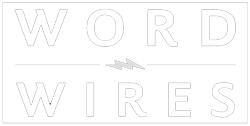Word-Wires Foundation Sample Lessons
Word Wires Foundation
The Word-Wires Foundation Curriculum is designed for use in a Tier 1 Kindergarten classroom though it can be used with first grade students who need more articulatory awareness games and activities compared to our Word-Wires One Curriculum.
Unit 1: Students become reading scientists, exploring how the body and brain work to read and write. It introduces routines and the sense of discovery and an awareness of how people learn.
Unit 2: Students become language scientists who explore how sounds are made in the mouth to build articulatory phonological awareness and prepare them to connect sounds to letters Using mouth cards as concrete scaffolds, students learn the consonant sounds that are the easiest to hear, feel and see. Students also use the mouth cards to organize and understand the linguistic similarities and differences between speech sounds. They then add the letters that spell these sounds to their Consonant Key, a tool that allows them to use their mouth to look up the abstract letter..
Unit 3: Students begin to read and write words. We begin our vowel work phonologically with the universal vowel sounds (ee/ah/oo/uh). As students become fluent at building words phonologically with the mouth pictures, we guide students to use this critical knowledge to read and spell words using these fundamental vowels.
Unit 4: Students learn the rest of the consonant sounds, including those that are more linguistically challenging, some of which have digraph spellings (s, sh, ch, y-, w-, h-). While students are building their knowledge of these more complex consonants, they will continue to work recursively using phonological play to build, track, and change sounds in words, as well as both reading and spelling words using all the sounds and letters they have learned so far.
Unit 5: Students learn the rest of the vowel sounds and build a Vowel Key, a linguistic scaffold that tracks tongue position and mouth shape to organize vowel sounds by how we hear, feel and see them. The Vowel Key paves the way for accurate reading and spelling. Making these subtle sound differences concrete helps students differentiate between the many vowel sounds, strengthening the sound-letter association when letters are later added. It is our intent that students move between pure phonological activities and those involving letters. If students just memorize the letter connection, they may not truely transfer their phonological knowledge to later reading and spelling particularly in words with consonant blends or challenging vowel sounds.
Unit 6: We introduce foundational phonics patterns of Open, Closed, and Magic e patterns through phonic stories. Phonics stories personify the vowel patterns, making them engaging, imaginative, and memorable. By weaving the stories together around common themes, these stories highlight the interconnected relations of English orthography and morphology in a multi-modal, multisensory way. Acting out the stories, drawing pictures of their characters and listening to the music helps all students create a multi-sensory event. This aids the students’ ability to remember and recall the stories and therefore the phonics patterns, all while honoring the multiple intelligences in the classroom. The Vowel Key becomes a powerful scaffold for reading and spelling because students use their mouth to read and spell the vowel sounds within the words. The mouth helps them hear the sounds and the Vowel Key supports them to remember which letters represent those sounds.
NEWLY REVISED Word-Wires Foundation Curriculum, Edition Two
Based on the feedback from the wonderful pioneering teachers who used the Word-Wires Foundation edition one, we have made revisions and additions to the Word-Wires Foundation curriculum.
- While the basic program and sequence have remained the same, we have combined lessons to facilitate a faster pace.
- Also to quicken the pace, we moved some concept lessons into a flexible lesson section.
- To provide an entry point for classrooms not ready to commit to the mouthy linguistics lessons, we have included an option for teachers to use a Vowel Table rather than the Vowel Key.
- We have refreshed most of the character pictures.
- We have included all the Set One decodable books of the Word-Wires Read-ables series.
Each Unit is made up of a series of lessons followed by Practice, Apply, Automate, and Transfer activities (PAAT) designed to move students’ skills through the Learning Spiral.
- Practice: Using the Guided Release of Responsibility model, Practice begins as a teacher-guided activity and gradually releases students to independence. Students practice patterns in isolation with opportunities for self-monitoring, self-checking, and think-alouds.
- Automate: After students have practiced and are adept and accurate, have them practice in small daily doses with increasing smoothness. Automaticity means students have become so proficient they can do it effortlessly.
- Apply: While working on making skills automatic, have students apply skills in highly-supported contexts.
- Transfer: Encourage and expect students to use patterns independently in various subjects.

